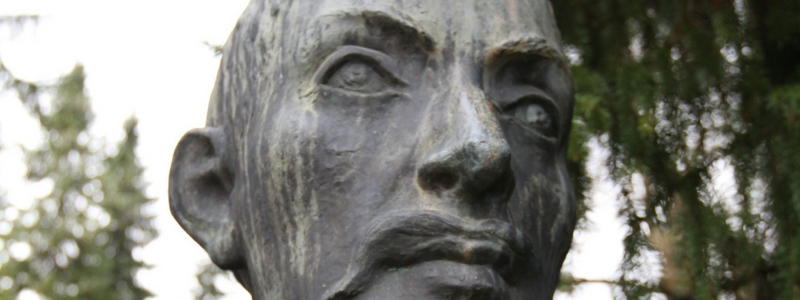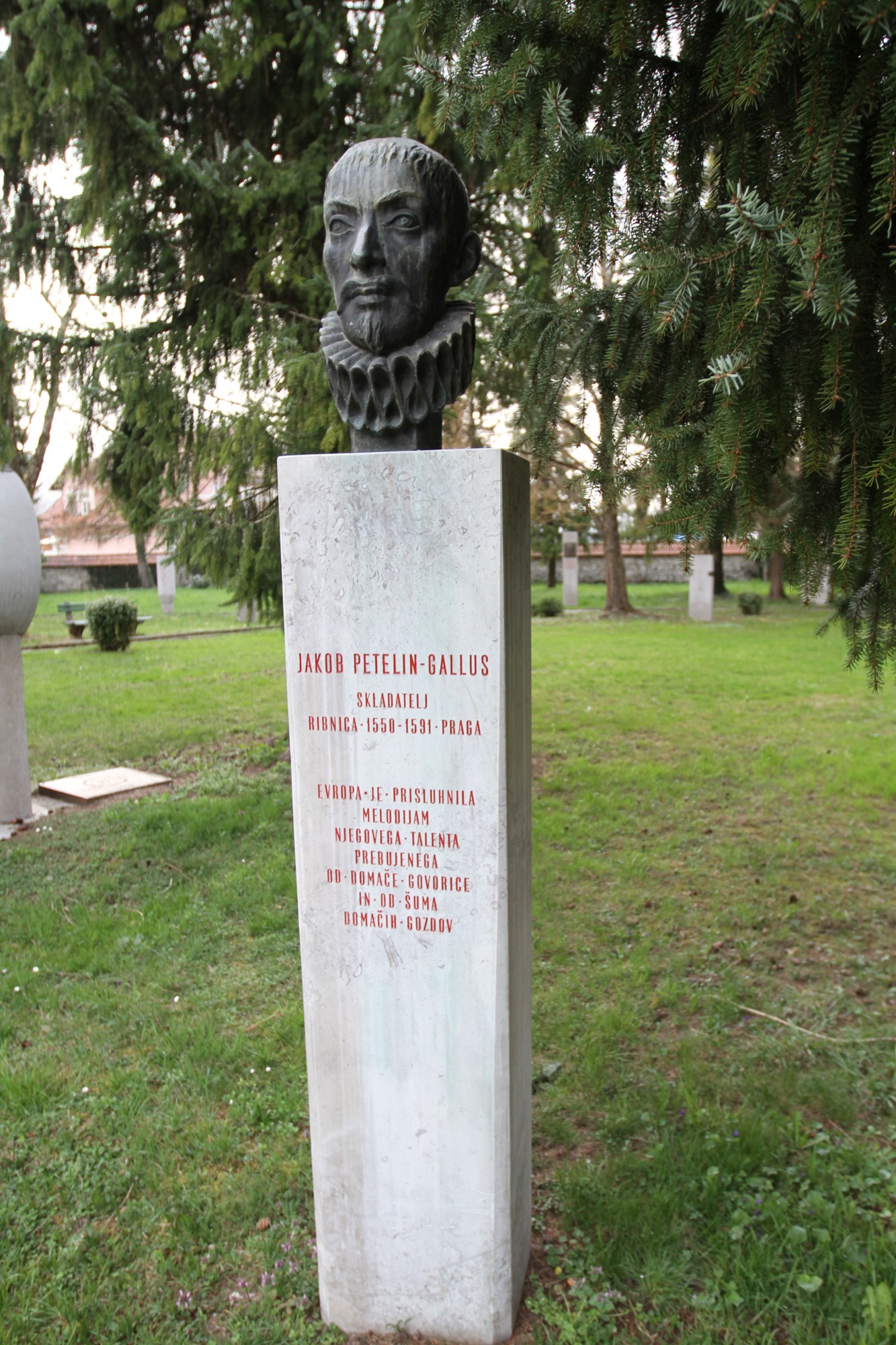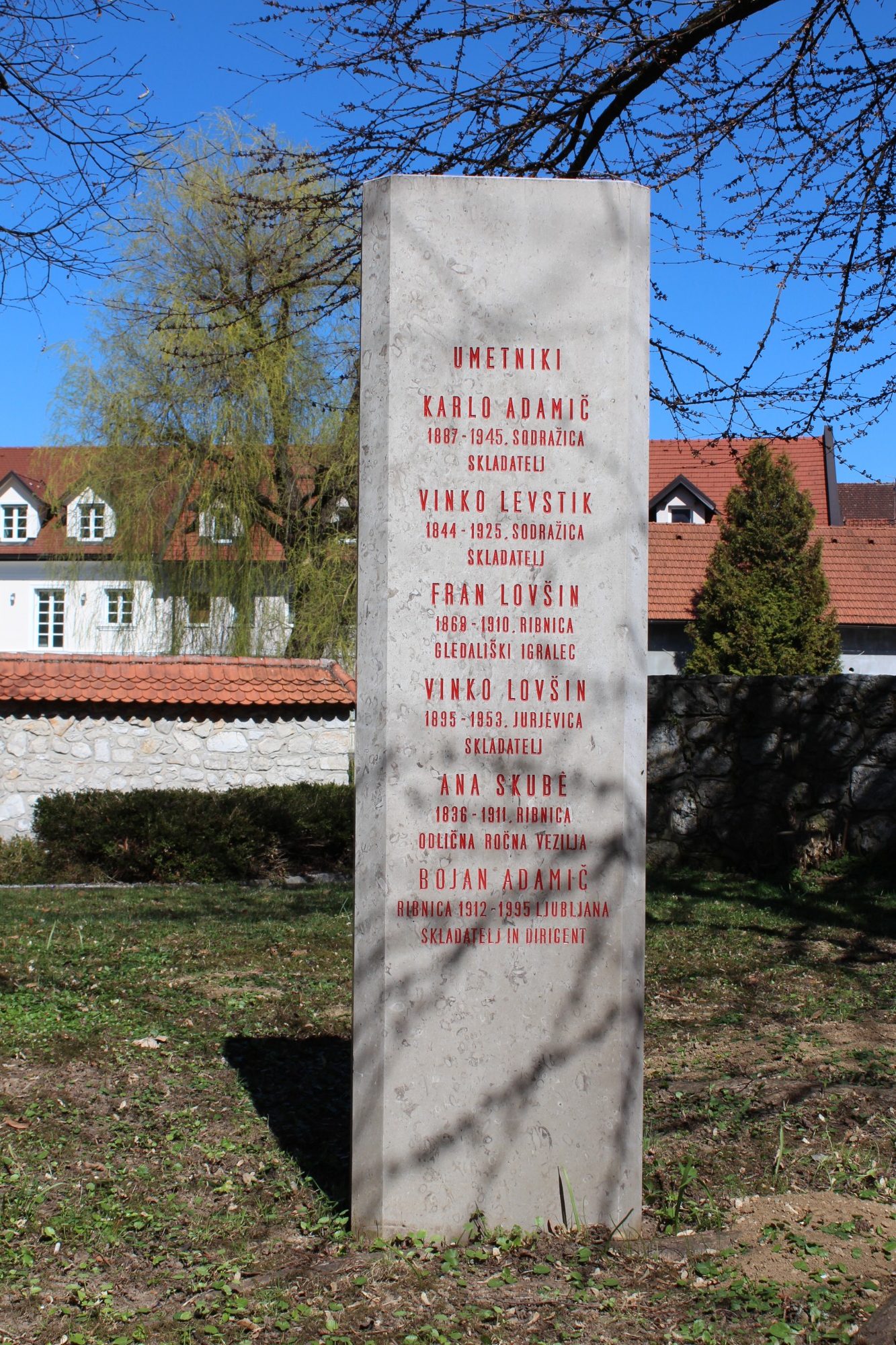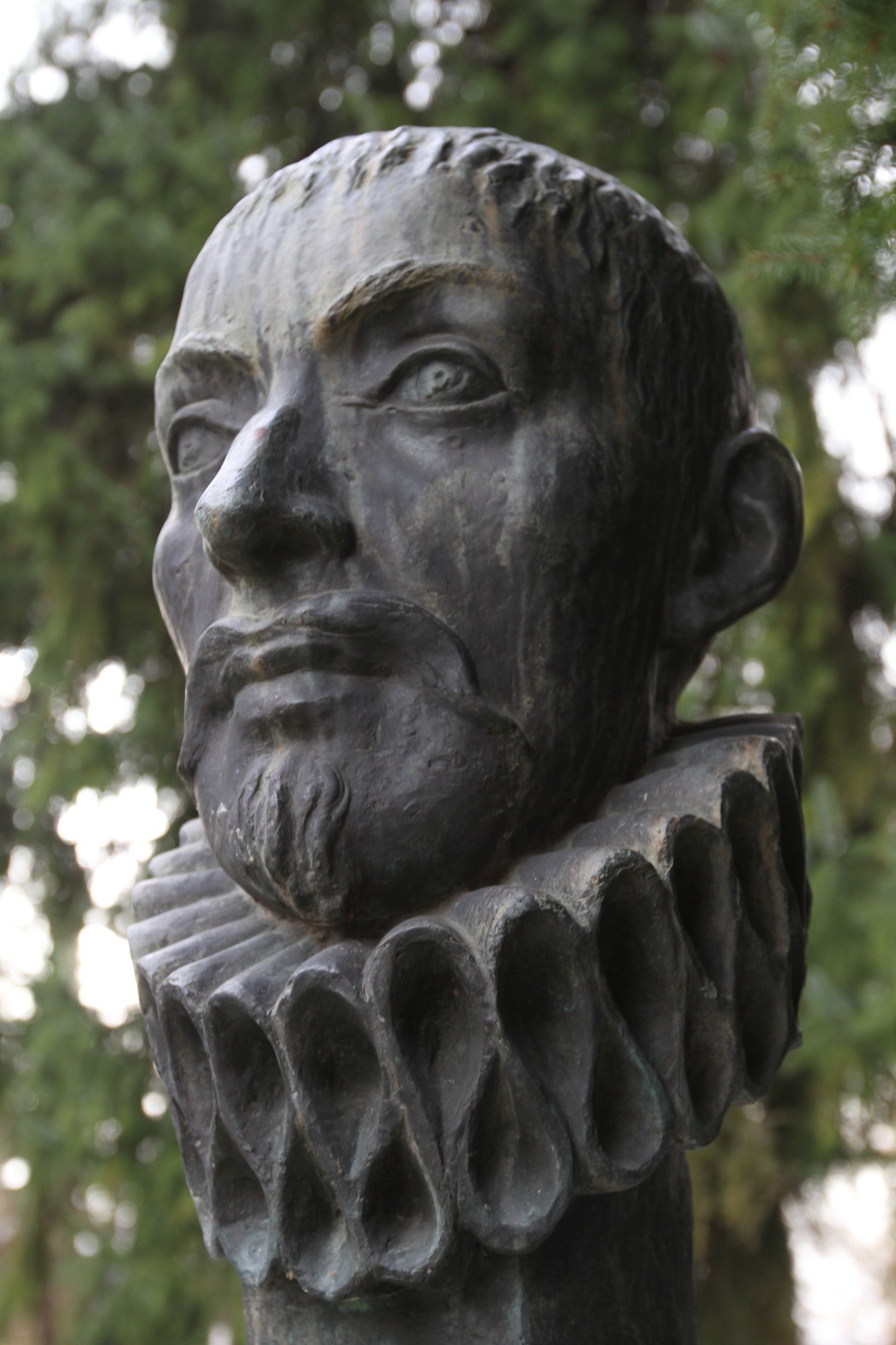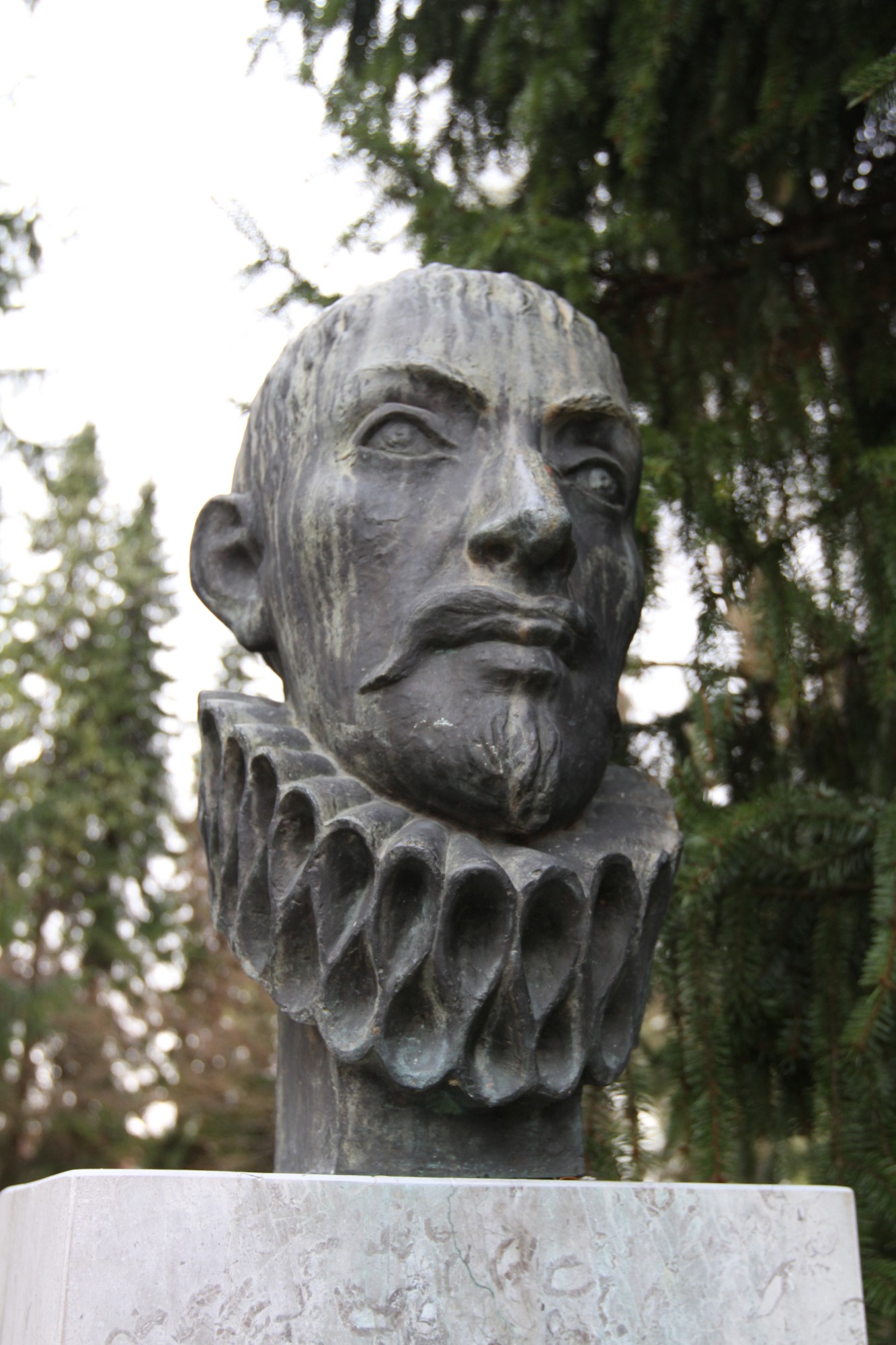In 1982, on the initiative of the Ribnica Tourist Society, the Cultural Memorial Park was landscaped in the grounds of the Ribnica Castle. The names of numerous (approx. 70) culture professionals who contributed to the intellectual development of Ribnica or were in some way associated with the region are inscribed on various stone memorials. Professor Janez Debeljak and Dr Anton Slodnjak wrote the inscriptions, and architect Vlasto Kopač drew up the plans for the memorials and their layout. An independent memorial is dedicated to Renaissance composer Jacobus Handl Gallus, purportedly born in Reifnitz (present-day Ribnica), and another jointly honours notable music figures that include Ribnica-born jazz and pop-song composer Bojan Adamič, Karl Adamič, who was born in the adjacent Sodražica and worked abroad as an adherent of the Caecilian Movement, and church musicians Vinko Levstik and Vinko Lovšin.
Karlo Adamič
Karlo Adamič (1887–1945) devoted most of his career to choir conducting, organ playing and teaching singing. His composing output developed in close adherence with the principles of the Caecilian movement.
He first took up music after completing his primary-school education, with organists from Velike Lašče, Luka Armeni and his successor, Josip Rott. He furthered his studies at the Organ School in Ljubljana and regularly played organ in his final year during school masses in St Florian’s Church. He first worked as an organist and primary-school singing teacher in the village of Selca above Škofja Loka, and then went to Croatia, where church musicians of Adamič’s qualifications were in high demand. In Split, he became choirmaster and kapellmeister of the Caecilian Society and the choir of the town’s cathedral.
In Croatia, he concentrated most of his composing efforts on writing church music. His oeuvre encompasses orchestral works for various ensembles, chamber compositions and pieces for solo organ or harmonium, religious compositions for male and mixed choirs with organ accompaniment based on Slovenian, Croatian and Latin texts, as well as secular choral pieces and some lieder. His liturgical work primarily comprises pieces based on Old Slavonic texts, and compositions suffused with folk melodies. In Croatia, some of his songs spread among the people and attained folk song status. His most important and most frequently performed work is Staroslovenska senjska misa (Old Slavonic Senj Mass), which in Croatia still forms part of the regular church repertoire.
Similarly to his church works, Adamič’s secular compositions are based on simple harmonisations with altered tones, and reflect influences of folk melodies. His works were published in Cerkveni glasbenik, Novi akordi (Church Musician, New Chords) and the publication of the Zagreb Caecilian Society, Sv. Cecilija.
Maia Juvanc
Vinko Levstik
Vinko Levstik (1844–1925), born into a family of farmers in Sodražica near Ribnica, was a choral director and organist. He worked as a teacher and organist in Dobrova, Dobrepolje and Trebnje. He spent most of his life in Vrhnika, serving as a schoolmaster, choirmaster and organist of the parish church choir.
He received instruction in music from composer Anton Nedvěd, and joined the Caecilian Movement when it emerged and flourished in Slovenia through the advocacy of Anton Foerster. Levstik was a gifted organist and an accomplished music improviser.
The writer Ivan Cankar often featured him in his works, most notably in Martin Kačur and Moje življenje (My Life).
Maia Juvanc
Vinko Lovšin
Vinko Lovšin (1895–1953) was a choirmaster and composer who served as the first parish priest in the parish church of Litija, and was the initiator of Litija’s Cultural and Educational Society.
Lovšin was born in Jurjevica near Ribnica. He attended primary school in Ribnica and grammar school in Šentvid near Ljubljana, and then studied theology in Ljubljana. After his ordination and subsequent first mass in 1919, Lovšin joined the Society of St Francis de Sales. In 1924, he left the society and became a curate, first in Metlika, and later, in 1930, in Šmartno pri Litiji. When a parish church was established in Litija in 1936, Lovšin became its first parish priest.
He received music tuition from his grammar school teacher, Vojteh Hybášek, and the cathedral curate, Stanko Premrl. He completed a course in chant at the Saint Benedict Monastery in Sekava. He taught singing under the auspices of the Society of St Francis de Sales in Rakovnik near Ljubljana and elsewhere, including Krakow, Veržej and Zagreb. He composed and published Venčarica (Songbook) for children’s choir, arranged several collections of songs for children’s voices, and in 1923 published chants (cantus choralis) for Holy Week. In Zagreb, he self-published a collection of Marian and Eucharistic songs, settings of Croatian texts. During World War II, Lovšin was interned in Serbia, and emigrated to Argentina after the war.
Maia Juvanc
Bojan Adamič
You can read the biography HERE.
